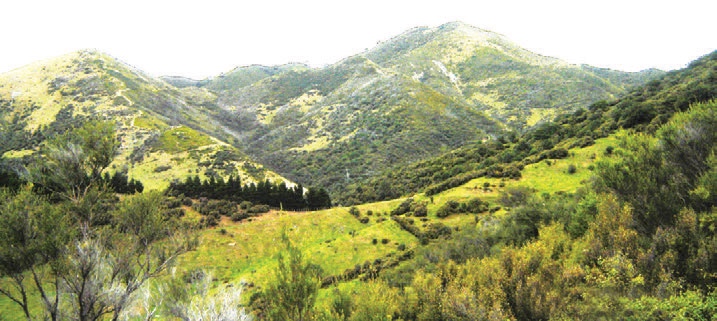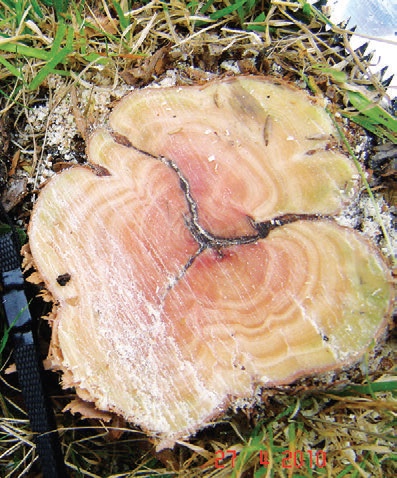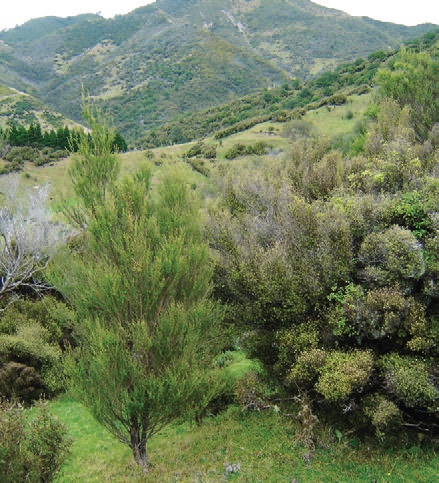Pre 1990 forest land allocation plan and new indigenous look-up tables
Stuart Orme, New Zealand Tree Grower August 2010.
This is the third in a series of articles relating to the ETS as it affects land owners and forest growers.
Pre 1990 forest land allocation plan
MAF expects that the pre-1990 forest land allocation plan will be in force in late July, and that they will have opened for applications for compensation credits on 1 August 2010. There will be a solid information push from MAF, and hopefully other land-management associated organisations, to advise land owners of their opportunities and obligations. From this information, and the previous article in the May Tree Grower, land owners will hopefully be able to make informed decisions.
There is a limited time of about 14 months in which to make applications. MAF has invested in a team dedicated to processing these applications and providing an online mapping service, but this is not available initially. Do not underestimate the fact that the system could be choked with applications. Leaving your application to the last month of the available period may not be a wise thing to do.

What can you do now?
If you do not have an NZEUR account open in the name of the land owner then you could do this now at www.eur.govt.nz. This is a two stage process and involves securing a user name and opening the NZEUR account on line.
The diagram below shows the process.You will need this account so that any pre 1990 compensation,or post 1989 credits, that you are allocated can be given to you. MAF cannot start to process an application without this in place.
Currently the plan intends to allocate −
- 60 units to land owners who owned the land on or before 31 October 2002
- 39 units to land owners who have purchased the land on or after 1 November 2002.
A total of 38 per cent of these credits will be allocated on confirmation of an approved application. The balance will be in the next Commitment Period, which will be as soon as early 2013 if still applicable. Check the plan for the close-off date once it is made public.
A worked example
This is for 40 hectares of pre 1990 forest land. The first table is for land owned on or before 31 October 2002, the second for land owned on or after 1 November 2002.
| 40 hectares at 60 units per hectare | 2,400 NZU at $20 a unit | |
| 23 units allocated now | 912 NZU | $18,400 |
| 37 units allocated in 2013 | 1488 NZU | $29,600 |
| Total compensation @ $20 per unit | $48,000 | |
| 40 hectares at 39 units per hectare | 1,560 NZU at $20 a unit | |
| 15 units allocated now | 600 NZU | $12,000 |
| 24 allocated in 2013 | 960 NZU | $19,200 |
| Total compensation @ $20 a unit | $31,200 | |
Further information can be obtained from the MAF web site and the help line 0800 CLIMATE. Alternatively, I am sure you will find your friendly Registered Forest Consultant happy to complete the process with you.
New look-up table
The new indigenous sequestration numbers, when combined with potential revenues such as honey or managed grazing retirement, could appeal to many owners of phosphate deficient Class 6 and 7 hill country with a passion for returning land to its original forest state. At first MAF was allocating the equivalent of three carbon units per hectare for indigenous forest growing on post 1989 eligible forest land through either the ETS or Permanent Sinks Forest Initiative.
As a result of further work confirming New Zealand indigenous sequestration trends, these numbers will increase significantly from October this year. The table on the next page shows potential carbon volumes and returns for carbon sold from effectively reverting eligible land. The accrual figures come from the MAF look-up tables for indigenous forest and can be found on the MAF web site.
Eligible land that reverts after 1 January 1990 is able to accrue carbon credits under either the ETS or the Permanent Forest Sink Initiative. The historic rates of three units per hectare per year have been changed to reflect the additional growth available in the first 40 years of a block’s reversion.
| Years since planting or since regeneration began | Cumulative sequestration | Annual carbon sequestration per year | Indicative value per hectare per year at $20 a unit |
|---|---|---|---|
| 1 | 0.6 | 0.6 | $12 |
| 2 | 1.2 | 0.6 | $12 |
| 3 | 2.5 | 1.3 | $26 |
| 4 | 4.6 | 2.1 | $42 |
| 5 | 7.8 | 3.2 | $64 |
| 6 | 12.1 | 4.3 | $86 |
| 7 | 17.5 | 5.4 | $108 |
| 8 | 24 | 6.5 | $130 |
| 9 | 31.6 | 7.6 | $152 |
| 10 | 40.2 | 8.6 | $172 |
| 11 | 49.8 | 9.6 | $192 |
| 12 | 60.3 | 10.5 | $210 |
| 13 | 71.5 | 11.2 | $224 |
| 14 | 83.3 | 11.8 | $236 |
| 15 | 95.5 | 12.2 | $244 |
| 16 | 108.1 | 12.6 | $252 |
| 17 | 120.8 | 12.7 | $254 |
| 18 | 133.6 | 12.8 | $256 |
| 19 | 146.3 | 12.7 | $254 |
| 20 | 158.7 | 12.4 | $248 |
| 21 | 170.9 | 12.2 | $244 |
| 22 | 182.6 | 11.7 | $234 |
| 23 | 193.9 | 11.3 | $226 |
| 24 | 204.7 | 10.8 | $216 |
| 25 | 215 | 10.3 | $206 |
| 26 | 224.6 | 9.6 | $192 |
| 27 | 233.7 | 9.1 | $182 |
| 28 | 242.2 | 8.5 | $170 |
| 29 | 250.1 | 7.9 | $158 |
| 30 | 257.5 | 7.4 | $148 |
| 31 | 264.3 | 6.8 | $136 |
| 32 | 270.6 | 6.3 | $126 |
| 33 | 276.3 | 5.7 | $114 |
| 34 | 281.6 | 5.3 | $106 |
| 35 | 286.5 | 4.9 | $98 |
| 36 | 290.9 | 4.4 | $88 |
| 37 | 295 | 4.1 | $82 |
| 38 | 298.7 | 3.7 | $74 |
| 39 | 302 | 3.3 | $66 |
| 40 | 305.1 | 3.1 | $62 |
The columns on the left in the table indicate the carbon sequestration based on the new MAF tables cumulatively, annually and at a price of $20 for each NZU on a per hectare basis by age of vegetation. For example, after 10 years the table indicates that 40.2 NZU have been previously accumulated and 8.6 NZU were sequestered in that calendar year. At $20 a unit the carbon sold would generate $172 a hectare.
Is your land eligible?
In the photograph below the reversion is still in its initial stages or in gorse. Therefore on 31 December 1989 it is likely the area would not already have been forest land under the ETS rules. As such, it will almost certainly be eligible for entry into the ETS or the Permanent Forest Sink Initiative.



The above two photographs show evidence that can be used to support an application. They show the size of forest species typically present, such as the manuka bush, their age as in the growth rings, and the location obtained by GPS. We use all these processes to help clients and MAF with confirming land eligibility.
As noted earlier, further information can be obtained from the MAF web site.

 Farm Forestry New Zealand
Farm Forestry New Zealand

